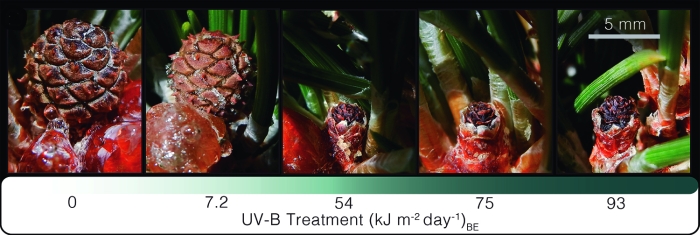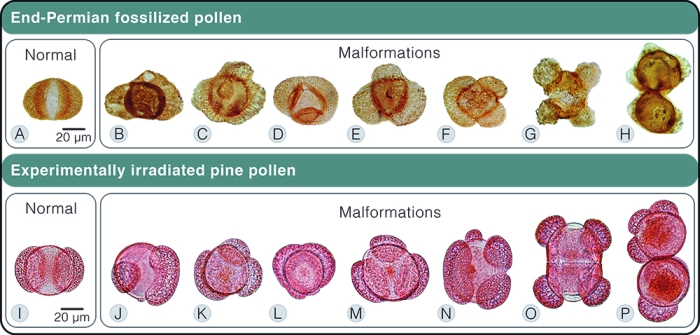Earth's largest-ever mass extinction event 252 million years ago may have been greatly exacerbated by a thinning ozone layer, researchers have discovered.
As it turns out, it's because too much unfiltered UV light renders some trees sterile, triggering a cascade of negative effects.
The Permian-Triassic extinction event was absolutely devastating. It destroyed 75 percent of land animals, 95 percent of marine life, and uncountable plant lineages worldwide.
Plant destabilisation and recovery episodes continued to take place for another 500,000 years, well into the Triassic.
Occurring at the same time, over a span of one million years between 251 and 250 million years ago, was an absolutely massive volcanic event, which created the region known as the Siberian Traps.
For a long time, scientists have thought that the two events were interlinked, and that the volcanic eruptions' effect on the ozone layer played a role - but what this role was is still unknown.
For example, acid rain could have contributed, but its effects are more localised than the global ruin that occurred.
Graduate student Jeffrey Benca of the University of California, Berkeley and team believe they may have found an answer - one that stands as a cautionary tale for the climate change occurring today.
They discovered that, when put under the same levels of extreme ultraviolet light that they believe occurred during the extinction event, pine trees are rendered temporarily sterile.
The team irradiated small, bonsai-like pines no taller than 49 centimetres (19 inches) with up to 13 times the UV light of a UV-high sunny day to simulate the effects of ozone depletion for two months.
 (Jeffrey Benca)
(Jeffrey Benca)
During that time, none of the trees died, but their pollen malformed, and all the seed cones shriveled and died after just a few days, rendering the trees sterile.
They did gradually recover after returning to normal light, but bouts of sterility would have an impact on tree populations, the researchers said.
"During the end-Permian crisis, the forests may have disappeared in part or fully because of increased UV exposure. With pulses of volcanic eruptions happening, we would expect pulsed ozone shield weakening, which may have led to forest declines previously observed in the fossil record," Benca said.
"If you disrupt some of the dominant plant lineages globally repeatedly, you could trigger trophic cascades by destabilising the food web base, which doesn't work out very well for land animals."
Fossils from many areas of the Gondwana supercontinent at the time of the event contain malformed pollen and other evidence of forest decline, which hints that other trees, not just conifers, could have been affected too.
 (Benca et al., Science Advances)
(Benca et al., Science Advances)
With scientists warning of an impending sixth mass extinction, and the ozone layer depleted by pollution resulting in higher levels of the UV-B radiation that damages DNA, the researchers believe their findings can warn us about Earth's future.
"Paleontologists have come up with various kill scenarios for mass extinctions, but plant life may not be affected by dying suddenly as much as through interrupting one part of the life cycle, such as reproduction, over a long period of time, causing the population to dwindle and potentially disappear," said co-author Cindy Looy.
The team's research has been published in the journal Science Advances.
